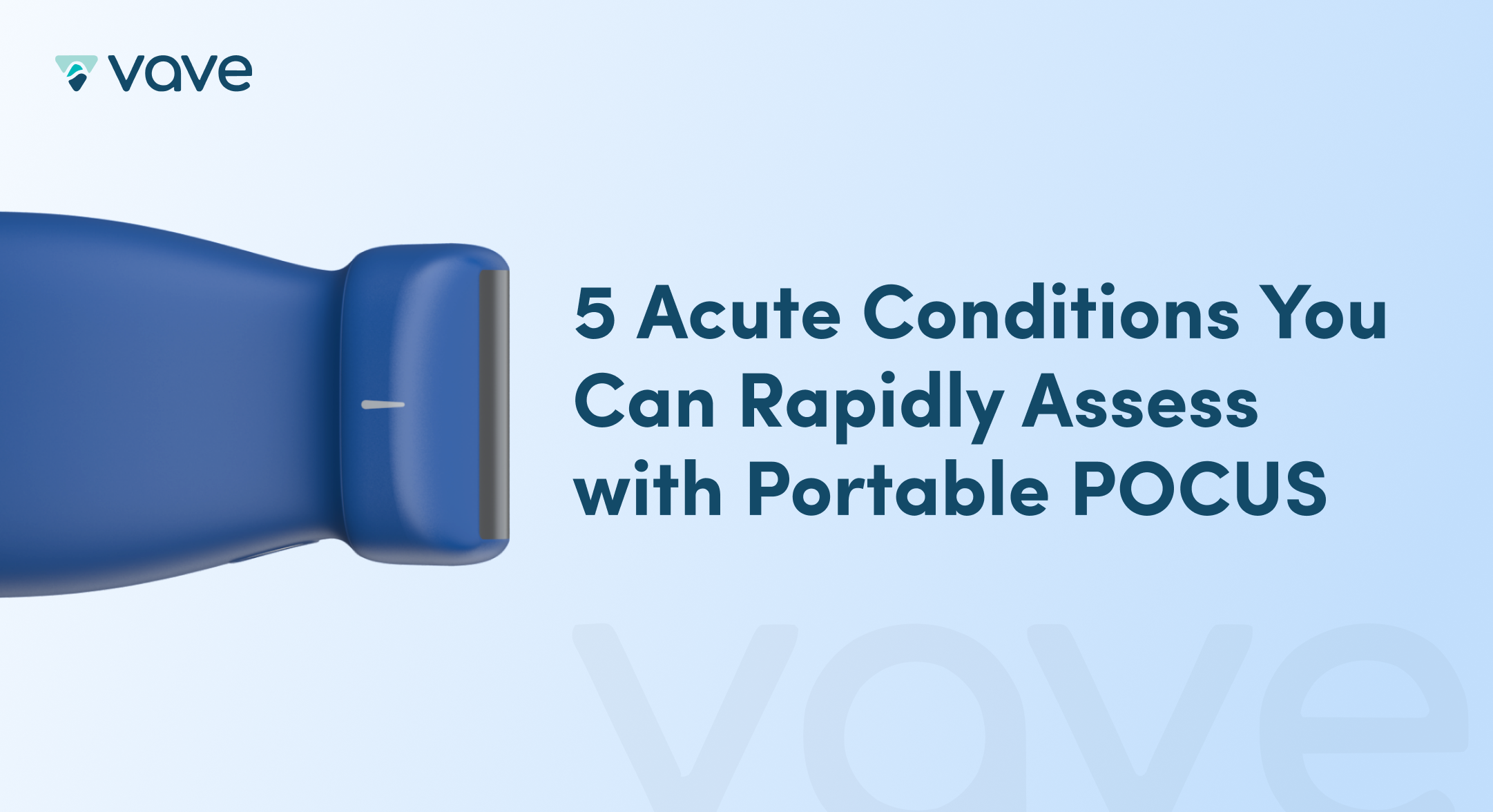5 Acute Conditions You Can Rapidly Assess with Portable POCUS
When a trauma patient arrives with chest pain and shortness of breath, traditional protocol requires chest X-ray, lab work, and possible CT imaging, a process that can take several hours.
But what if you had the ability to quickly evaluate for pneumothorax, assess for cardiac tamponade, and evaluate for pulmonary edema in under five minutes?
Handheld point-of-care ultrasound (POCUS) devices make this possible, delivering high sensitivity and specificity imaging in a fraction of the time required for other medical imaging methods.
This article explores how this technological shift is supporting clinical workflows, highlighting five serious conditions that POCUS can detect in minutes, and accelerate vital treatments.
How Handheld Ultrasound Accelerates Diagnosis
Ultrasound machines are a well-established tool for acute care, enabling fast and accurate imaging when time is limited. Traditional cart-based systems are large, heavy, and expensive. Most hospitals are unable to equip every acute care provider with their own device, leading to:
Handheld ultrasound devices solve those problems. They deliver similar diagnostic accuracy to cart-based systems1 without the same access and flexibility limitations. This enables real-time clinical decision-making with the potential to streamline emergency care from reactive to proactive.
5 Acute Conditions Handheld, Portable Ultrasound Can Identify
Research shows that handheld ultrasound empowers acute care providers to detect several serious conditions:
- Pericardial Effusion
Pericardial effusion can be life-threatening if not diagnosed and managed promptly. But the condition is not always serious; triage is required to ensure the right patients receive emergency care while saving others from unnecessary hospitalization.
Clinicians use handheld ultrasound to quickly visualize the pericardium and assess for an echo-free (anechoic) space around the heart—an approach that has shown to accelerate assessments.2
Ultrasound images help clinicians:
- Confirm or rule out pericardial effusion
- Estimate the severity and identify tamponade physiology
- Guide immediate intervention decisions
- Monitor response to treatment or progression of the effusion
- Free Fluid in the Abdomen
Free fluid in the abdomen can indicate a range of conditions from benign to life-threatening if not properly evaluated and managed. Patients might present with symptoms such as abdominal distension, pain, or changes in bowel habits, making rapid assessment critical for appropriate triage and treatment decisions.
Research shows that POCUS exams are far more accurate than physical examination alone,3 with high sensitivity (74-95%) and specificity (>95%) for detecting free intraperitoneal fluid.4
As a result, clinicians often use them to:
- Rapidly detect and localize free fluid
- Estimate fluid volume and assess distribution patterns
- Guide diagnostic and therapeutic interventions
- Monitor treatment response and detect complications
- Pneumothorax
Pneumothorax is a potentially life-threatening condition found in roughly 20% of trauma patients and 50% of severe chest trauma patients.5 Some studies find that early recognition of tension pneumothorax leads to mortality rates between 3-7%, while delayed recognition leads to morality rates of up to 91%.6
Research has demonstrated that ultrasound significantly outperforms chest radiography for pneumothorax detection.7 Such superior diagnostic capability, combined with its portability and speed, enables clinicians to:
- Rapidly rule out pneumothorax in trauma patients
- Detect occult pneumothorax missed by chest X-ray
- Confirm pneumothorax presence and guide intervention
- Provide real-time assessment during procedures
- Deep Vein Thrombosis (DVT)
Deep vein thrombosis (DVT) leads to mortality in approximately 6% of patients,8 with the condition estimated to cause 300,000 deaths annually in the U.S.9 Many of these deaths result from progression to pulmonary embolism, making rapid diagnosis critical.
POCUS matches the diagnostic accuracy of formal vascular laboratory studies while delivering results in minutes rather than hours; some research suggests it can save approximately 5 hours.10
This allows clinicians to:
- Rapidly assess symptomatic patients at the bedside
- Rule out DVT in low-risk presentations
- Guide immediate anticoagulation decisions
- Expedite care in time-sensitive scenarios
- Pulmonary Edema
Acute pulmonary edema is a medical emergency with in-hospital mortality rates ranging from 10% to 27.5% depending on underlying etiology and patient characteristics.11 Traditional diagnostic approaches often rely on clinical assessment, chest radiography, and laboratory markers like BNP. But these methods can be time-consuming and may delay critical interventions.
Handheld ultrasound solves this problem, offering exceptional accuracy that surpasses conventional imaging; research suggests it outperforms chest X-ray in both speed and accuracy.12
Such accelerated access to accurate imaging enables clinicians to:
- Instantly differentiate cardiac from non-cardiac dyspnea
- Quantify edema severity in real-time
- Guide immediate therapeutic decisions
- Monitor treatment response at bedside
Accelerate Insight in Acute Settings with Vave Health
Vave Health is the world's first wireless, handheld, whole-body ultrasound with a single PZT transducer. Our product and supplementary services reduce the barriers for acute care to make adopting POCUS easier:













.webp)
.svg)
.webp)
.svg)





.svg)

.svg)
.svg)
